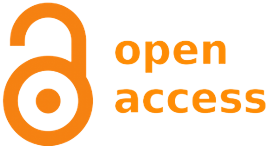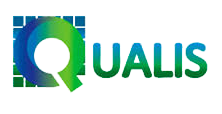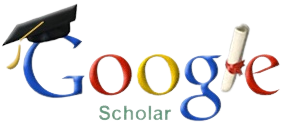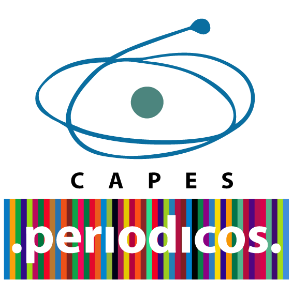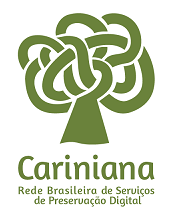Museums and virtuality: a relationship for the twenty-first century
DOI:
https://doi.org/10.5433/2317-4390.2016v5n2p102Keywords:
Virtual Museum, Image, Information and Technology, Digital intersemioses, Digital platforms, Art museums, Google Art ProjectAbstract
Introduction: Before photograph reproduction, art interaction was limited to physical presence at museums or visiting personal collections. With the digitization and the setup of works of art in digital platforms, museums had created a sort of simulacrum of the original works, but also transforming organic matter into computer language of bits and bytes.Objective: Identify and indicate the artwork on its conversion to virtual world when it passes thru scanned environments, since the change of a semiotic system to another causes disruptions and changes in the aesthetic quality of the work of art produced on a support and moved to another.
Methods: With use of a descriptive literature method in the access of information, new characteristics of access takes place through museological platforms in the web environment.
Results: With the digital online platforms, museums lose in intensity because the exhibited works are but representations of the original, however, it gains in extensiveness as it democratizes access.
Conclusions: These platforms recontextualize the works and serve as a translation guide for the collection. This leads the individual to go through the exhibition with a set of information that acts as didactic and pedagogical support guide in the repertoire of the acquisition process that also help in the expansion of the knowledge base.
Downloads
References
BARRETO, A. A. Uma quase história da Ciência da Informação. DataGramaZero, Rio de Janeiro, v. 9, n. 2, abr. 2008. Disponível em: http://dgz.org.br/ago07/Ind_com.htm. Acesso em: 28 ago. 2011.
BARRETO, A. A. Os destinos da ciência da informação: entre o cristal e a chama. DataGramaZero, Rio de Janeiro, n. 0, dez. 1999. Disponível em: http://www.datagramazero.org.br/dez99/Art_03.htm. Acesso em: 17 nov. 2011.
BUCKLAND, M.; GEY, F. C.; LARSON; R. R. Access to heritage resources using what, where, when, and who. In: TRANT, J., BERMAN, D. (eds.). Museum and the web 2007: Proceedings. Toronto: Archives & Museum Information, 2007.
CZEGLEDY, N. Arte como ciência: ciência como arte. In: DOMINGUES, D. (Org.). Arte e vida no século XXI: tecnologia, ciência e criatividade. São Paulo: UNESP, 2003.
EIRIN DE RAPP, M. N. Web-paginas de arte: informação X arte. In: PINHEIRO, L. V. R.; GONZÁLEZ DE GÓMEZ, M. N. (Org). Interdiscursos da Ciência da Informação: arte, museu e imagem. Rio de Janeiro; Brasília, DF: IBICT/DEP/DDI, 2000. p. 43-58.
JORENTE, M. J. V. Tecnologías, mídias, criação e hipertextualidade na transformação da informação em conhecimento interativo. 2009. 244 f. Tese (Doutorado em Ciência da informação) – Faculdade de Filosofia e Ciência, Universidade Estadual Paulista, Marília, 2009.
LE COADIC, Y. A ciência da informação. 2. ed. rev. amp. Brasília: Briquet de Lemos, 2004.
LEMOS, A. Cibercultura: tecnologia e vida social na cultura contemporânea. Porto Alegre: Sulina, 2008.
MAGENTA, M. Google Art Project libera visita virtual à Pinacoteca e ao MAM. Folha.com, São Paulo, 3 abr. 2012. Ilustrada. Disponível em: http://www1.folha.uol.com.br/ilustrada/1071082-google-art-project-libera-visita-virtual-a-pinacoteca-e-ao-mam.shtml. Acesso em: 3 abr. 2012.
MALRAUX, A. Antimémoires. Galliamard: Paris, 1967.
NEGROPONTE, N. A vida digital. Tradução de Sérgio Tellaroli. São Paulo: Companhia das Letras, 1995.
PINHO, J. A. S. As novas tecnologias da informação e comunicação diante da transversalidade entre natureza e cultura. Culturas Midiáticas, Paraíba, Ano I, n. 1, jul./dez., 2008. Disponível em: http://www.cchla.ufpb.br/ppgc/smartgc/uploads/arquivos/b29c8438c920100526091245. pdf. Acesso em: 24 de jun. de 2011.
PLAZA GONZALES, J. Tradução intersemiótica. São Paulo: Perspectiva, 2008.
RODRIGUES, B. C.; CRIPPA, G. A ciência da informação e suas relações com arte e museu de arte. Biblionline, João Pessoa, v. 5, n. 1/2, 2009. Disponível em: http://www.brapci.inf.br/repositorio/2010/11/pdfce0e96f989_0013065.pdf. Acesso em: 28 Fev.2016.
SANTAELLA, M. L. O que é semiótica. São Paulo: Brasiliense, 1983.
SANTAELLA, M. L.; NOTH, W. Imagem: cognição, semiótica e mídia. São Paulo: Iluminuras, 2001.
SANTAELLA, M. L.; NOTH, W. Semiótica aplicada. São Paulo: Cengage Learning. 2010.
Downloads
Published
How to Cite
Issue
Section
License
A revista se reserva o direito de efetuar, nos originais, alterações de ordem normativa, ortográfica e gramatical, com vistas a manter o padrão culto da língua e a credibilidade do veículo. Respeitará, no entanto, o estilo de escrever dos autores. Alterações, correções ou sugestões de ordem conceitual serão encaminhadas aos autores, quando necessário.
O conteúdo dos textos e a citação e uso de imagens submetidas são de inteira responsabilidade dos autores.
Os trabalhos publicados passam a ser propriedade da revista Informação& Profissões, ficando sua reimpressão total ou parcial sujeita a autorização expressa da revista. Em todas as citações posteriores, deverá ser consignada a fonte original de publicação, no caso a Informação&Profissões.




